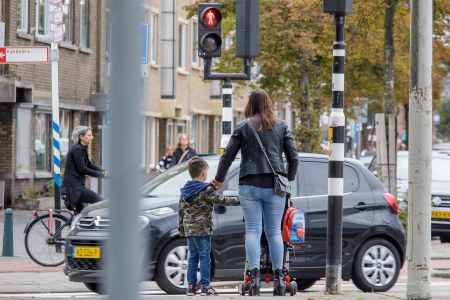In primary schools traffic education is a mandatory part of the curriculum, but in secondary schools, this is not the case. However, the subject of traffic is included in the core goals for secondary schools (in Dutch). In the lower grades road safety is mainly presented as part of other subjects. In the higher grades traffic is almost exclusively covered in campaigns for the target group, such as (light) mopeds and alcohol in traffic [2] [3].
For adolescents, there is a tendency for courses not only to focus on safe traffic behaviour, but on risk behaviour in general (no drugs, safe sex, and so on). One example is the project developed by VeiligheidNL ‘Fight your inner monkey’. This project particularly focuses on offering resistance to peer pressure. An evaluation in 2013 (referred to in the Toolkit Traffic Education [4]) showed that the students, compared to students in a control school, had more knowledge about peer pressure after following the project, and situations where peer pressure occurs were recognized better. The project had no effect on awareness and behaviour. Another example is the project 'Power or Control', that aims at teaching students to stand up for themselves and, at the same time, be considerate of others. This project has not yet been evaluated in terms of behavioural effects, though a process evaluation was performed [5]. A so-called resilience training in Australia focusing on all forms of risk behaviour, led to a decrease in the number of traffic crashes involving adolescents, whereas a specific training only focusing on traffic showed no decline [1] .
